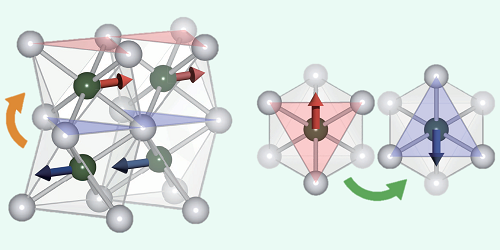Experimental Evidence for a New Type of Magnetism
In 2022, theorists gave a name to a new class of magnetic order: altermagnetism (see Viewpoint: Altermagnetism Then and Now). Materials that exhibit this phenomenon are predicted to have no net magnetization and an electronic band structure that is split into spin-up and spin-down bands, giving these materials properties of both antiferromagnets and ferromagnets. Despite extensive effort, strong experimental evidence for the existence of altermagnetic materials has been lacking. Such evidence has now been found by Changyoung Kim at Seoul National University in South Korea and his colleagues [1]. The researchers say that the distinctive properties of altermagnets could be useful for spin-based electronics.
Kim and his colleagues studied manganese telluride, a semiconductor that was expected to display altermagnetism. Theorists have predicted a large separation between the spin-up and spin-down bands in the material’s electronic band structure, making spin splitting potentially easier to observe in this material than in others. But the three-dimensional crystal structure of manganese telluride has been problematic for the conventional method for such measurements. One reason for the difficulty is that the technique—angle-resolved photoemission spectroscopy (ARPES)—is typically sensitive only to the band structure at a material’s surface rather than in the bulk. The team overcame this problem by applying ARPES to thin films of manganese telluride rather than to thick blocks.
The researchers found that, below 267 K, the manganese telluride films exhibited zero net magnetization and a spin-split band structure, which they argue provides compelling evidence for the existence of altermagnetism in the material. Next, the team plans to fully characterize the band structure using a variation of the ARPES technique called spin-resolved ARPES.
–Ryan Wilkinson
Ryan Wilkinson is a Corresponding Editor for Physics Magazine based in Durham, UK.
References
- S. Lee et al., “Broken Kramers degeneracy in altermagnetic MnTe,” Phys. Rev. Lett. 132, 036702 (2024).




